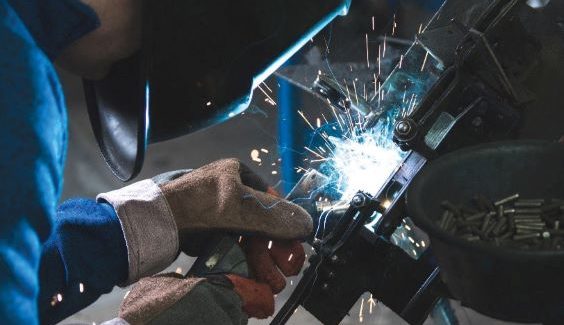How Fabricators Can Make Smart Use of Debt and Financing
Metal formers and fabricators can use debt capital to assist future growth during the economic rebound.
Posted: July 8, 2021
PROFIT MASTERY
BY JOHN FELIX
Revenue recovery, asset management and the possibility of growth will drive opportunities businesses seek in 2021, including those businesses involved in metal fabrication.
2020 will be remembered as a year of disruptions that brought to light many vulnerabilities across sectors. Industrial companies, including fabricators, are no exception and many have faced a tough start to the year due to steel tariffs, supply chain constraints, raw material price volatility, and other complications caused by the global pandemic.
While there is much optimism among manufacturers and key economic data points to a strong rebound, metal fabricators will still need to overcome the impacts of 2020. Below, let’s examine the landscape and discuss smart use of debt capital to assist in the recovery and a better position for future growth.
WHAT CASH FLOW CHALLENGES COULD OUR INDUSTRY FACE?
A tightening labor pool both domestically and internationally has created several problems for operators including inability to run production at capacity, higher costs for labor directly or indirectly through turnover, and supply chain disruptions both up and down stream. Further complicating the labor challenges is the changing geopolitical landscape and its impacts on raw material prices.
The labor shortage, combined with rising costs of inputs, has led to a cash crunch for many businesses. Many companies in metal fabrication continue to encounter obstacles to cash flow including high-priced material and material shortages along with delayed deliveries. It is the typical recovery cash constraint, compounded by material shortages with a host of direct and indirect causes, including the pandemic choking a supply chain trying to come back to life, and ongoing steel tariffs limiting supply. While manufacturers work towards meeting the snap back in customer demand, many are contending with the financial challenge of how to finance their operational ramp.
In some markets, the lack of industry-specific liquidity and lending options at large banks is a major factor leading to cash flow problems in the iron and steel sector. Steelcase sources report that global steel traders are the major borrower of most commercial banks, and banks fears have deepened as some steel traders went bankrupt and escaped from the market, allowing banks to further tighten credit loans to steel traders. This is a big reason why some large metal fabricators are looking for new lending SME partners that specialize in their field and asset base.
For some companies in this space, working capital has been stalled due to the lack of industrial activity. Financial difficulties by first-tier end users of key materials such as steel and aluminum remain a challenge. It is possible the lack of liquidity and lending options will, therefore, force a wave of defaults and complications. Not all companies can move forward and survive this pandemic, but it may not be because they are bad at business strategy. Their cash flow has dried up and they have suffered from elements out of their control.
HOW FABRICATORS CAN MAKE SMART USE OF DEBT FINANCING TO WEATHER THE CASH CRUNCH
The first step is assessing the capitalization of your business. Typical contingency plans to help manage capital for businesses usually follow events like natural disasters, cyberattacks and power outages, among others, but do not generally consider the widespread quarantines, massive infrastructure damage and added travel restrictions. Purchasing new equipment and refreshing inventory may have crossed the minds of many fabrication managers during these past 12 months. Managers should consider the optimum liquidity or cash plus revolving loan availability to manage the day-to-day working capital swings as well as building adequate cushion for one-off events.
In addressing liquidity needs, managers should understand how to maximize availability through effectively leveraging their balance sheets. Not all asset-based loans are created equally and finding the right lender that ascribes the most value to your business’ assets will allow you the operating margin you need to weather temporary challenges.
Once the short-term needs are addressed, consider the future of your business and its ability to meet its potential. Just as asset-based loan products will enable you to overcome liquidity hurdles, term loans can help you achieve long-term growth plans. Through leveraging your current cash flows and future revenue streams via backlog, a term loan lender can facilitate a number of initiatives from facility expansion to acquisition. By diversifying products, customers, and geographies, your business may be better insulated from the certain future one-off events that can lead to a cash crunch.
In all cases, the right debt financing starts with the right lender. Just as every business has its own nuances, so do many of the bank and non-bank lenders operating today. When exploring options, be sure to understand each lender’s experience in your space, their risk appetite, and their own sources of capital to ensure they have the appropriate qualifications to meet your needs.
WHERE ARE THE OPPORTUNITIES FOR GROWTH AND TO THRIVE?
The building blocks for sustained and successful growth begin internally. Manufacturers must identify and expertly control all variables to their processes within their ability, such as production efficiency, safety, maintenance and tooling down time and material waste. By creating a controlled and replicable operating process, business leaders can confidently focus on the other challenges of growing a business such as product development, competitive positioning and acquisitions. Many traditional forms of lending are available for companies to maintain and improve fabrication manufacturing including equipment loans/leases, cash flow term loans and asset-based facilities that account for the profitability and total asset portfolio of a company.
To achieve controlled and replicable operating practices, management should be well versed on what tools are available to them for monitoring and measuring their operations. The velocity of new developments in the Internet of Things (IoT) and manufacturing automation is increasing every year and as such, business leaders should continuously evaluate their own processes. Creating a culture of efficiency can help drive margin and better position you to garner incremental market share.
There are hundreds if not thousands of programs, applications, and modern technologies available that can optimize your business. The digital world changes every day with new technology developed almost daily. The strength of a company’s tech presence and ability to automate is more important now than ever before. Many business leaders in manufacturing, machinery and raw materials may argue that they do not need more investment in technology and do not need an online presence because they have sustained their growth through word-of-mouth referrals and traditional growth strategies. However, we believe this mentality creates a false sense of security. Seemingly overnight, COVID-19 changed the way businesses operate and individuals live their lives. The time is now to adjust towards improving asset portfolios around technology and shift mindsets on which tools are needed for the future.
Generally over time, but especially during periods of disruption, businesses without strong operational processes and/or without adequate capitalization can be vulnerable to competing bids or prime targets for acquisition. Throughout our pandemic recovery, it has become clear that risks in supply chains, production, operations, and distribution channels are somewhat mitigated or hedged. We believe it is imperative that companies take the time to evaluate and take advantage of new opportunities.
The pandemic has forced many manufacturers to adjust and reevaluate their sourcing, largely due to numerous supply chain shortages and disruptions, especially in the earliest days of the pandemic. As a result, manufacturers should make a concerted effort to bring proper lending strategies and their operations closer. We have seen an increasing desire on the part of many business leaders to harvest raw materials and equipment from domestic suppliers, and lending partners can help assess this pursuit through loan options. All of this is going into motion to help avoid pandemic-related disruptions and support the domestic economy moving forward.
Revenue stability and the possibility of growth will likely continue to drive the opportunities businesses seek in the wake of disruption. Each of these strategic actions requires capital now or in the near future. As management looks to the next stage of the business, they need to acknowledge the factors that shape performance and support long-term growth. As the broader economy returns to the new normal for activities, we believe it is now more critical than ever for executives to have ample access to their assets and capital. Solutions such as creative asset-based lending solutions, cash-flow term loans and equipment specific financing can be customized to meet the capital demands of today and the liquidity needs of tomorrow.
It will take time to evaluate and take advantage of new opportunities. While it may be challenging to start the process, the right lender will work with your team closely to create long-term benefits such as growth and transformation.





